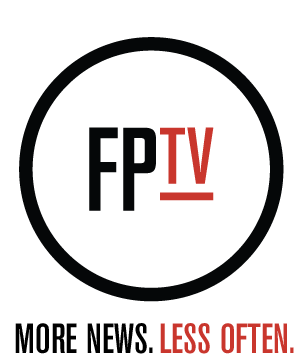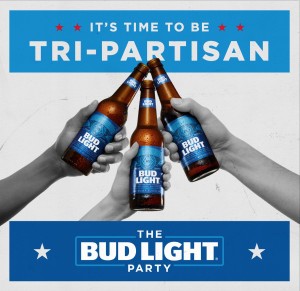Visual Vernacular: Michael McFadden
From Michael McFadden’s “aesthetic][equity”
Making use of Art League Houston‘s hallway space that connects their exhibition spaces, local writer and organizer Michael McFadden has constructed the exhibition aesthetic][equity, which hones in on the rocky history of socio-economic inequity that exists within the Houston arts community. Through a collective that is part visual record and part call-to-action, McFadden’s efforts present a blue print for artistic change along with proposals to help even out the imbalances in a vast art-world hierarchy. Dissecting history of equity while looking closely at the art economy, this exhibition serves as a documentation to be turned to action for the members of the creative class in our city. McFadden answered some questions on how he gathered, divided, and conquered this sea of information to present at Art League Houston.
Free Press Houston: How did exposure to the arts in your early years carry you to now?
Michael McFadden: It was pretty sparse outside of school. Looking back, I was lucky enough to have a steady stream of art classes and dedicated teachers. It didn’t really connect at the time, and I didn’t even remember it until you asked, but in elementary school my teacher was actually introducing my class to works by Lichtenstein and exposing us to more complex ideas than our little minds could fully process. I doubt my teacher expected it to stick like that or that any of her students would go on to be so deeply involved in the arts community, but that’s why art education and that kind of exposure are so important. The majority of my involvement in the arts really came just a few years ago when I met and started working with Max Fields and Rachel Vogel of Suplex, organizing and installing exhibitions and programs.
FPH: Were there any instances in your own writing and interactions in the art world that you used as guidance for this exhibition?
McFadden: There’s definitely been a slow build in this direction. In terms of specific instances, Charge — a practicum that was organized by Jennie Ash and Carrie Schneider — has had an impact because it has presented so many different issues that artists face and projects that have been implemented in order to address them. In conjunction with Charge this year, Cindy Peña and Rachel Vogel organized a reading and discussion group that shed a lot of light on the history of labor and organization in the arts as well as more contemporary efforts. Outside of Charge-related interactions, I’ve had a lot of conversations with local artists about artists’ rights, equitable compensation, the value of art, support networks, and how institutions interact with artists. As for my writing, there hasn’t been a direct connection in terms of subject matter. The closest it probably comes is the pieced-together income of being a freelance writer.
FPH: The questions that you are raising in this exhibition are presented in an interesting manner, visual in nature but beyond just what is on the walls. How did you prepare for the show and how are you exhibiting your reflections?
McFadden: The exhibition is tied to a research project for my Masters Degree. The data on display is taken from a survey that I constructed in collaboration with Karen Farber and Pia Agrawal of the Mitchell Center and Sixto Wagan of the Center for Arts Leadership. That project is more connected to the institutional side of the exhibition, which looks at how institutions can work — either individually or collectively — to build a stronger network of support for artists in the city.
The rest has been a lot of reading. The other half of the exhibition is kind of like a research paper. There’s text laid out in vinyl on the wall to describe two artist-led projects: Time/Bank and The Artist’s Contract. Both of these look at inequity in different ways but still have the goal in mind being a better world for artists. Time/Bank strikes me as infinitely more idealistic — expressing a desire to operate outside of or beyond the world we occupy that is restricted by borders, laws, governments, etc. — while the contract attempts (or attempted) to operate within it, working within the limits of the system that rules it to address the issues they faced.
FPH: What are some of the more interesting discoveries about the imbalances within the Houston arts community that perhaps you were even surprised about?
McFadden: I’m still interpreting the results of the survey, which is open for people to take if they haven’t already. In certain cases, I’ve witnessed a complete lack of planning on the part of institutions. It’s a little disheartening at times to see decisions made on a whim — decisions that impact a lot of people — without taking the time to think more deeply on what will happen or what could happen in the future. There’s a lot of potential to do more, but in the non-profit world it’s easy to get bogged down by what funders want to see instead of looking at what people need. The non-profit system is flawed in certain ways because there are instances when the organization has to bend to the whim of donors and funders, should they place specific requirements on how the money is used. This problem trickles down to artists because it forces a shift in opportunity.
FPH: What is an artist to do when they wish to make a living off of their work but thus often becoming part of a commodity for someone not in their same class system? Is there even a way to strike a balance?
McFadden: Striking a balance between viewing art as something sacred and viewing it as a commodity is tough because it occupies both systems of value, sometimes simultaneously and sometimes switching between the two. It’s really up to the artist to decide how they want their work to be valued and then build a practice around that. Making a living off of work takes a lot of time and luck (or marketing or manipulation, depending on how you wish to view it). It also requires an expanded network of connections, which at times requires a certain amount of privilege to attain. That’s part of what the exhibition is about, thinking more on questions like this and figuring out how to move forward.
FPH: Tell me about how this exhibition will extend its reach by providing resources for art spaces and artists.
McFadden: The survey results will be drafted into a report that will be distributed to the leaders of some Houston organizations, including the University of Houston’s College of the Arts. Based on the results, my project will end with a series of recommendations specific to the Mitchell Center and the College of the Arts. Another aspect of the exhibition is that people will be asked to contribute their knowledge and skills in two ways: skills that they would be willing to share with others and organizational resources that they are aware of. These will be put together in zine-style directory that’ll be sent out to local organizations and artists should they wish to use or distribute it.
The opening reception for Michael McFadden’s “aesthetic][equity” takes place at Art League Houston (1953 Montrose) from 6 to 9 pm on Friday, August 5 at the ALH Hallway Space with an artist talk slated a 6:30 pm. The exhibition will be on view through September 17.










